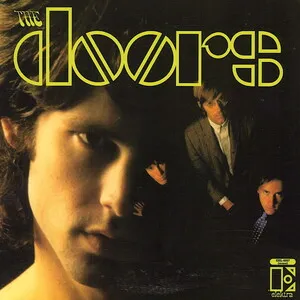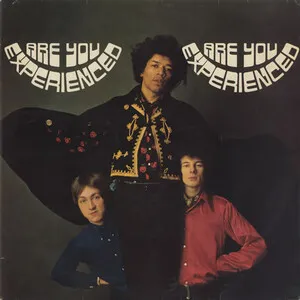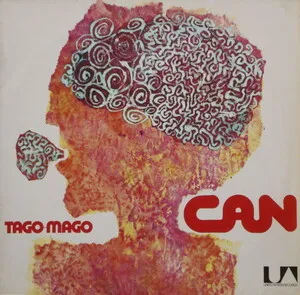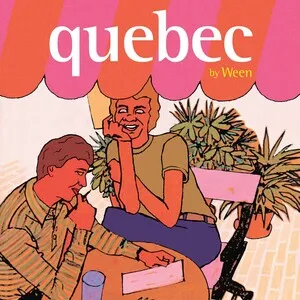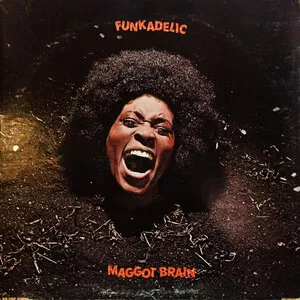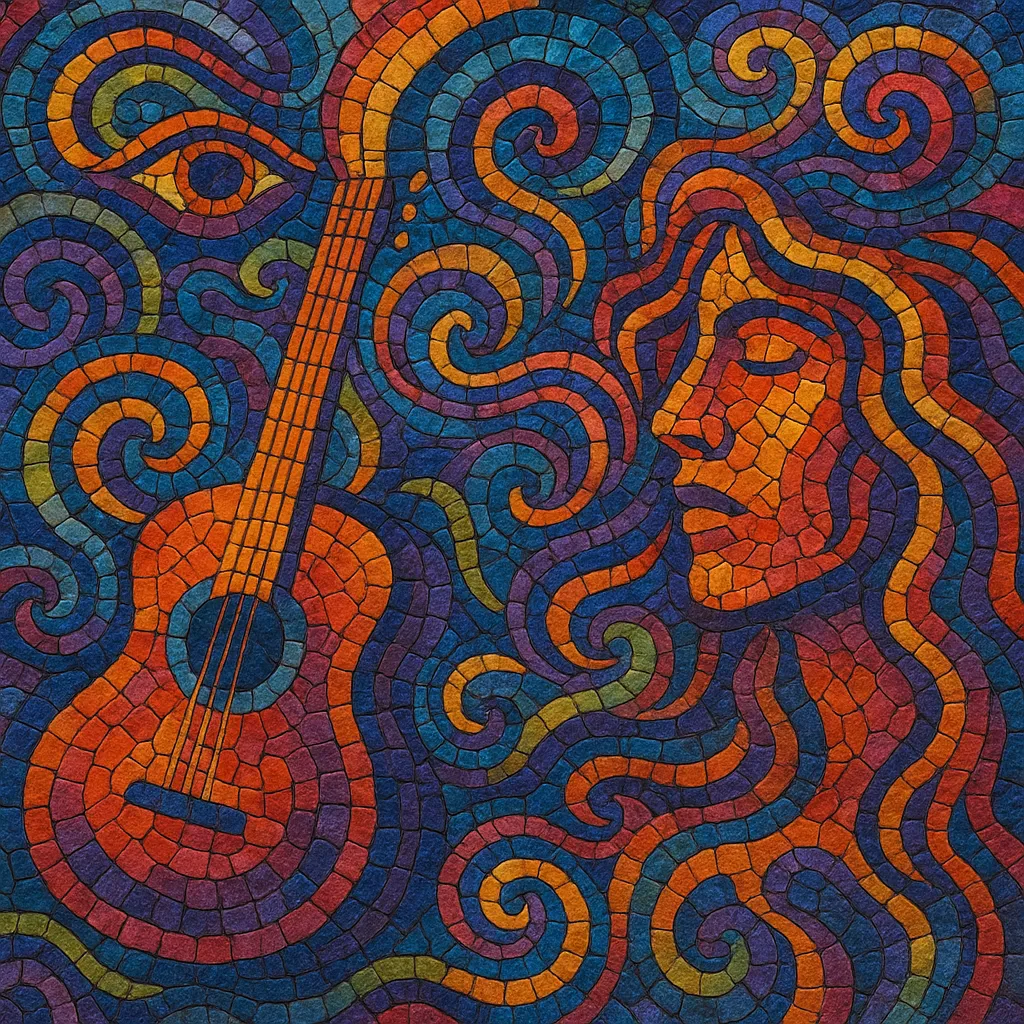
Psychedelic rock is a style of rock music that seeks to evoke, simulate, or amplify altered states of consciousness. It emphasizes timbral color, textural layering, and extended forms over traditional verse–chorus efficiency.
Hallmarks include droning or modal harmonies, jangling or heavily fuzzed guitars, swirling organs or synthesizers, and extensive use of studio effects such as tape delay, reverse tape, phasing, flanging, and Leslie-speaker rotation. Rhythms often loosen into hypnotic vamps and long improvisations, while lyrics tend toward surreal imagery, cosmic themes, and introspection.
The sound draws from Indian classical drones and scales, blues and R&B roots, folk lyricism, free-jazz openness, and the burgeoning studio experimentalism of the mid‑1960s. It became a cultural emblem of the counterculture era.
Psychedelic rock emerged in the mid‑1960s in the United States (especially San Francisco and Los Angeles) and the United Kingdom (notably London). It grew from garage rock’s raw energy, folk rock’s jangling guitars and introspective lyrics, blues and R&B foundations, and the newfound appetite for sonic experimentation. Eastern musical influence—particularly Indian classical drones and scales—arrived through popular figures and a broader fascination with non‑Western sounds. The studio became an instrument: engineers and producers embraced tape manipulation, feedback, and electronic effects.
Key early landmarks include The Byrds’ “Eight Miles High” (1966), The Beatles’ Revolver and Sgt. Pepper’s Lonely Hearts Club Band, early Pink Floyd (Syd Barrett era), The 13th Floor Elevators, The Doors, Jefferson Airplane, and the San Francisco Acid Tests that fostered improvisational concert culture.
The Summer of Love (1967) and events like the Monterey Pop Festival crystallized psychedelic rock’s cultural centrality. Bands stretched song lengths, embraced modal jams, and incorporated sitar, tambura, Mellotron, and psychedelic studio collage. Psychedelia became both a sonic toolkit and a lifestyle signifier for the hippie movement.
By the turn of the 1970s, psychedelic approaches splintered: some groups intensified volume and riff focus, contributing to hard rock and early heavy metal; others expanded harmonic and structural ambition, feeding progressive rock and space rock. In Germany, the movement’s experimental ethos catalyzed krautrock, emphasizing repetition, electronics, and motorik grooves. While mainstream prominence waned after Woodstock and Altamont, psychedelia’s language persisted across rock’s substyles.
The 1980s revived psychedelic sensibilities via neo‑psychedelia and the Paisley Underground. The 1990s saw stoner rock fuse heavy riffs with trippy textures, while shoegaze and dream pop adapted psychedelic timbres into dense, atmospheric soundscapes. 2000s–2010s artists (e.g., Tame Impala, and modern psych/garage scenes) reinterpreted classic elements with contemporary production. Psychedelic rock remains a foundational vocabulary for experimental and textural rock worldwide.
Aim for a sound that feels expansive and coloristic. Prioritize timbre, atmosphere, and texture alongside melody and groove. Allow sections to breathe and evolve.
Use electric guitar (clean jangle and saturated fuzz), bass with a warm, rounded tone, and drums that can shift from steady backbeat to free, tom‑driven patterns. Add keyboards (Hammond organ, Farfisa, Mellotron), auxiliary percussion, and occasional non‑Western instruments (sitar, tambura) or their modern synth/sample stand‑ins.
Favor modal centers (Dorian, Mixolydian) and drones over frequent functional modulation. Vamps on I or I–bVII–IV can sustain long sections. Melodies can be raga‑influenced (ornaments, micro‑inflections), pentatonic, or chant‑like.
Alternate between hypnotic mid‑tempo vamps and freer, rubato passages. Use swung or slightly behind‑the‑beat feels for hazy momentum. Extended jams should rise and fall dynamically; cue transitions with drum fills, pedal builds, or textural swells.
Employ delay, spring reverb, phasing/flanging, tape saturation, reverse reverb/tape, Leslie/Uni‑Vibe/chorus on guitars and keys. Layer drones, feedback, and synth pads to create a kaleidoscopic stereo field. Experiment with tape loops, found sound, and subtle musique concrète elements.
Start with a simple motif or riff, then expand through variation and layering. Include instrumental breaks for improvisation. Consider A–B sections that contrast texture more than chord changes, and endings that dissolve into ambience or return to the initial drone.
Write surreal, imagistic, or cosmic narratives. Explore introspection, nature, perception, and metaphoric journeys rather than literal storytelling. Use synesthetic imagery and open‑ended refrains.
Balance tight ensemble cues with open sections for in‑the‑moment exploration. Use visual aids (lights/projections) and dynamic control (from whisper to roar) to enhance the immersive effect.


